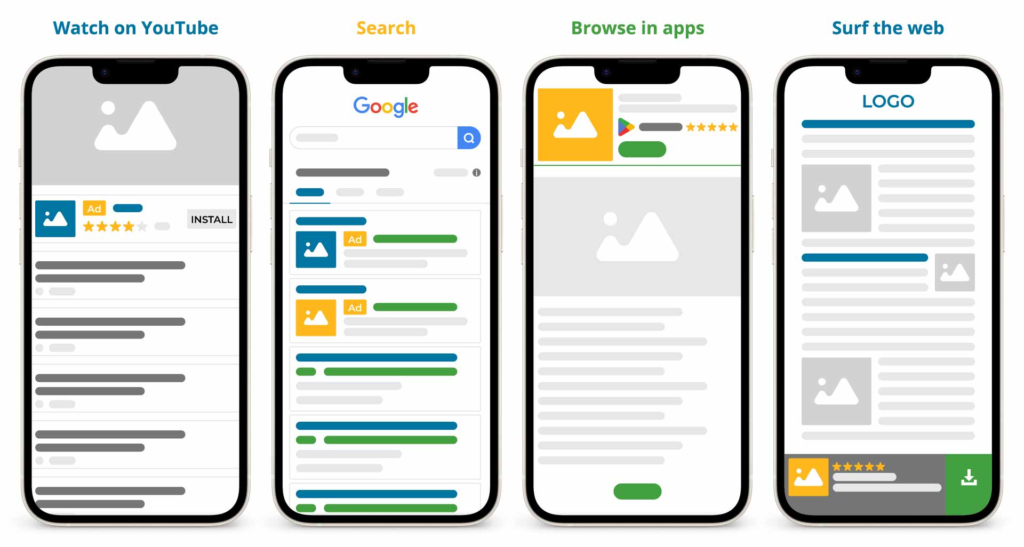
Introduction to Ad Formats
In the fast-paced world of digital marketing, capturing your audience’s attention is more crucial than ever. With so many ad formats available, how do you ensure that your message resonates? Whether you’re a seasoned marketer or just starting out, understanding different ad formats can make all the difference in viewer engagement.
From traditional billboards to dynamic video ads on social media platforms, each format offers unique opportunities and challenges. As consumers become increasingly savvy and selective about what they engage with, marketers must adapt their strategies accordingly. Are interactive ads the game-changer you’ve been searching for? Or will classic approaches still reign supreme?

Join us as we explore various ad formats and discover innovative advertising strategies designed to maximize viewer engagement. Get ready to elevate your campaigns and capture the hearts—and eyes—of your target audience!
Traditional vs. Digital Ad Formats
Traditional ad formats, such as print, radio, and television, have long been staples in marketing. They offer broad reach but often lack the precision needed for targeted messaging. Their effectiveness can diminish when audiences engage with content on their own terms.
In contrast, digital ad formats have revolutionized how brands connect with consumers. They enable dynamic targeting based on user behavior and preferences. From display ads to video ads and social media advertising, digital platforms allow for real-time engagement analysis.
While traditional methods still hold value for brand awareness campaigns, digital avenues provide innovative opportunities. Brands can interact directly with their audience through interactive ads or personalized emails.
Choosing between these approaches depends on campaign goals and target demographics. Understanding both formats ensures that marketers leverage the best of both worlds to enhance viewer engagement effectively.
Types of Digital Ad Formats
Digital advertising offers a diverse range of formats designed to capture attention and drive engagement. Banner ads are among the most traditional online options, featuring graphical images or animations that appear on web pages.
Video ads have surged in popularity, particularly on social media platforms. They engage users through storytelling and visual appeal while allowing brands to convey complex messages in seconds.
Native ads blend seamlessly with content, making them less intrusive. These ads fit naturally within the user experience, often enhancing rather than disrupting it.
Social media stories provide ephemeral content that creates urgency and encourages immediate interaction. Their full-screen format captures focus effectively.
Email marketing remains influential with personalized ad placements directly in inboxes. This approach fosters direct communication and nurtures relationships with potential customers. Each digital ad format serves specific objectives tailored to audience preferences and behaviors.
Choosing the Right Ad Format for Your Audience
Understanding your audience is crucial when selecting the appropriate ad format. Consider their preferences, behaviors, and where they spend time online.
For instance, if you’re targeting a younger demographic, social media platforms are essential. Formats like short video ads or engaging stories can capture attention effectively.
On the other hand, a professional audience might respond better to informative content such as LinkedIn sponsored posts or webinars. Here, thought leadership and credibility play significant roles.
Don’t forget about device usage. Mobile users favor snackable content that’s easy to consume on-the-go. Desktop audiences may appreciate more detailed information presented through infographics or long-form articles.
Experimentation is key in digital marketing. Test different formats to see what resonates best with your target group while analyzing engagement metrics closely for valuable insights into their preferences.
Strategies for Increasing Viewer Engagement

Creating viewer engagement requires a multi-faceted approach. First, focus on storytelling. People connect with narratives that resonate emotionally.
Next, leverage social media platforms for real-time interaction. Encourage comments and feedback to foster community involvement. This two-way communication can significantly boost viewer loyalty.
Incorporating visuals is another key strategy. Eye-catching graphics and compelling video ads capture attention quickly, making your message memorable.
Personalization also plays a vital role in keeping audiences engaged. Tailor content based on user preferences and behaviors to create relevant experiences.
Consider gamification elements in your marketing tactics. Quizzes or challenges can spark curiosity while providing entertainment value that keeps viewers coming back for more.
Utilizing Interactive Ads for Maximum Engagement
Interactive ads are revolutionizing viewer engagement in the digital landscape. They invite users to participate actively rather than passively consuming content.
Think about quizzes, polls, or games integrated into ad formats. These elements not only capture attention but also create a memorable experience. The more involved your audience is, the stronger their connection to your brand.
Consider using augmented reality (AR) features that allow users to visualize products in their own space. This level of interaction fosters excitement and curiosity, driving deeper engagement.
Social media platforms offer excellent opportunities for interactive advertising too. Features like Instagram Stories include swipe-up links and question stickers that encourage immediate responses from viewers.
By implementing these tactics, you can transform standard advertisements into engaging experiences that resonate with audiences on a personal level.
The Future of Ad Formats and Engagement
As technology advances, so do ad formats. The future promises a shift towards even more personalized and immersive experiences. Augmented reality (AR) and virtual reality (VR) will likely play pivotal roles in how viewers interact with brands.
With the rise of artificial intelligence, marketers can expect hyper-targeted content that reaches consumers at just the right moment. This could mean ads tailored not only to demographics but also real-time behaviors and preferences.
Moreover, social media platforms are evolving rapidly, offering new features for advertising strategies. Expect to see more dynamic video ads that capture attention within seconds.
Interactive ads will become increasingly prevalent as they encourage direct viewer involvement. This creates memorable experiences while enhancing audience engagement.
The focus will center on meaningful interactions over mere impressions, marking a significant change in digital marketing tactics moving forward. Brands that adapt quickly will thrive in this fast-paced landscape.
Conclusion
Understanding the various ad formats and how they influence viewer engagement is essential for any marketing strategy. With the rapid evolution of digital marketing, it’s clear that traditional methods may not suffice alone. Embracing diverse ad formats such as video ads, social media advertising, and interactive ads can significantly enhance audience engagement.
Choosing the right ad format requires insight into your target audience’s preferences and behaviors. Engaging content tailored to their interests will yield better results than generic advertisements. As we move forward, incorporating innovative strategies will be key in creating memorable experiences for viewers.
The future of advertising lies in adaptability and creativity—leveraging emerging technologies while staying attuned to what resonates with audiences. By focusing on effective advertising tactics that prioritize viewer involvement, brands can build lasting connections that go beyond mere transactions.
With a blend of strategic planning and creative execution, marketers have an opportunity to redefine how audiences interact with their content today and in years to come.
For more such info, please visit QAWire


